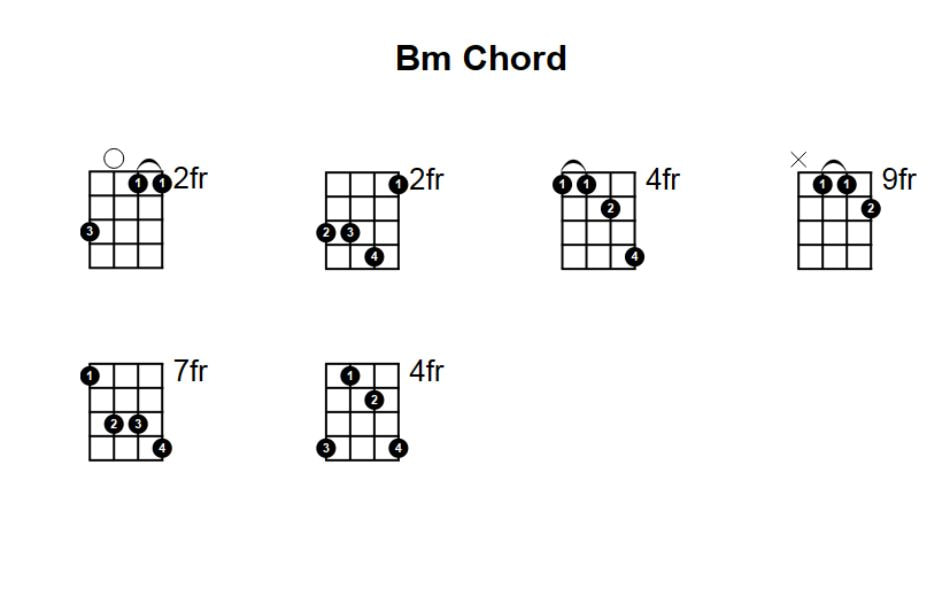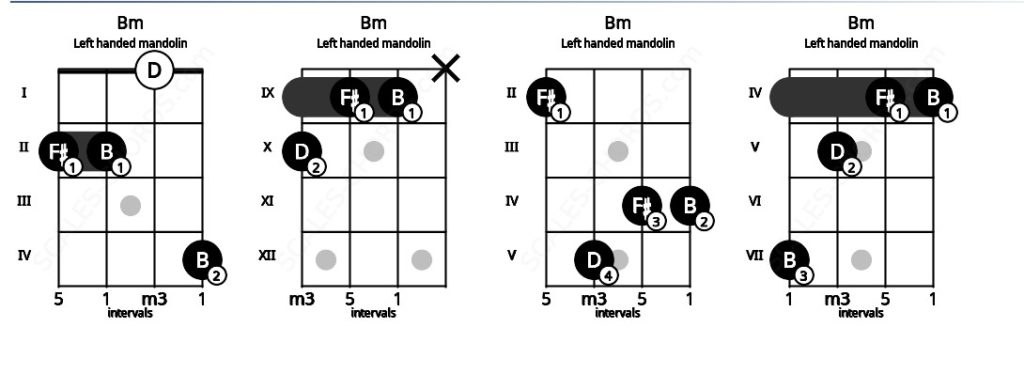Mastering the art of playing chords is a fundamental aspect of learning the mandolin. One such essential chord is B minor, denoted as Bm. Understanding how to play the B minor mandolin chord is a crucial step for any mandolin enthusiast, providing the foundation for a plethora of musical compositions.
Contents
Music theory of B minor mandolin chord
B minor mandolin chord (Bm) is a specific combination of notes played simultaneously, creating a harmonic sound. It’s a fundamental minor chord and has a unique finger positioning on the mandolin. This is an essential mandolin chord for beginners.
Notes in the B Minor Chord
The B minor chord is made up of three essential notes:
- B (the root note)
- D (the minor third)
- F# (the perfect fifth)
As for its similarity with other instruments, the B minor chord (or any specific chord) has the same musical notes regardless of the instrument. However, the finger positioning and voicing may differ due to the variations in tuning and structure of each instrument.
In terms of sound, a Bm chord on the mandolin will have a bright, crisp sound due to the mandolin’s unique timbre. It may sound similar in tonality to a B minor chord played on a guitar or piano but will have its distinct mandolin character.
In a standard tuning for mandolin (G-D-A-E), there’s only one Bm chord. However, you can play B minor in different positions on the fretboard, resulting in variations of the B minor chord voicings, which can add diversity and richness to your playing.
How to Play Bm mandolin chord
To play the correct B minor mandolin chord (Bm), follow these instructions for proper finger positioning:
- Place your index finger on the 2nd fret of the A string. This will produce the note B, which is the root of the B minor chord.
- Place your middle finger on the 4th fret of the E string. This will produce the note F#, which is the perfect fifth of the B minor chord.
By following these instructions and practicing regularly, you’ll be able to position your fingers correctly and play the B minor chord cleanly and accurately on the mandolin. Consistent practice will help you gain proficiency in playing this chord and incorporating it into your mandolin playing.

Some B minor chord shapes of mandolin
In standard tuning (G-D-A-E) for the mandolin, there is one primary B minor mandolin chord formation. However, you can play the B minor chord in multiple positions on the fretboard, resulting in variations of the B minor chord voicings. These variations may involve different fingerings or voicings while maintaining the same B, D, and F# notes that define the B minor chord.
So, while there is one fundamental B minor chord, there are multiple ways to play it across the fretboard, providing versatility in your playing and allowing for different tonal qualities and musical expressions.
Bm chord charts mandolin for left-handed
The Bm chord on the mandolin, like on most fretted instruments, has one main chord shape or chart. The chart or chord shape for Bm on the mandolin remains the same regardless of whether you’re playing left-handed or right-handed. The only difference is the orientation of the instrument and the corresponding hand positions.
So, for Bm on the mandolin, there is one standard chord chart that applies to both left-handed and right-handed players. The finger positioning and string placement remain the same; only the hand orientation changes based on whether you’re a left-handed or right-handed player.

You’ve now uncovered the key to playing the B minor mandolin chord. By following the instructions and understanding the finger placements, you’ve taken an important step in your mandolin playing journey.
